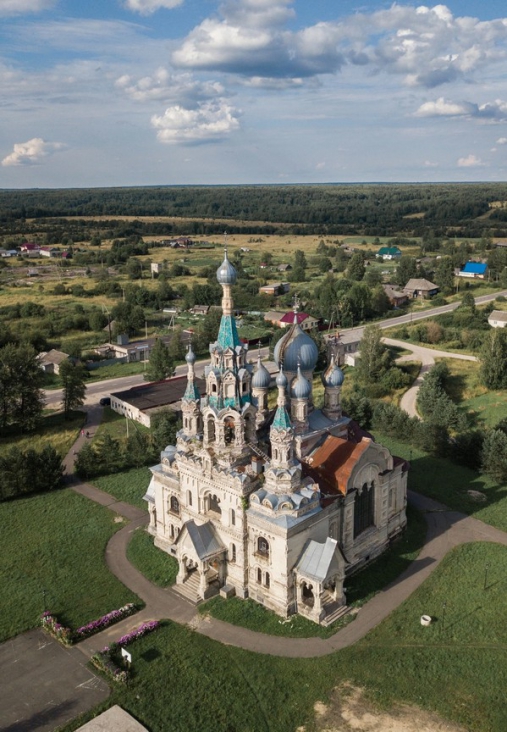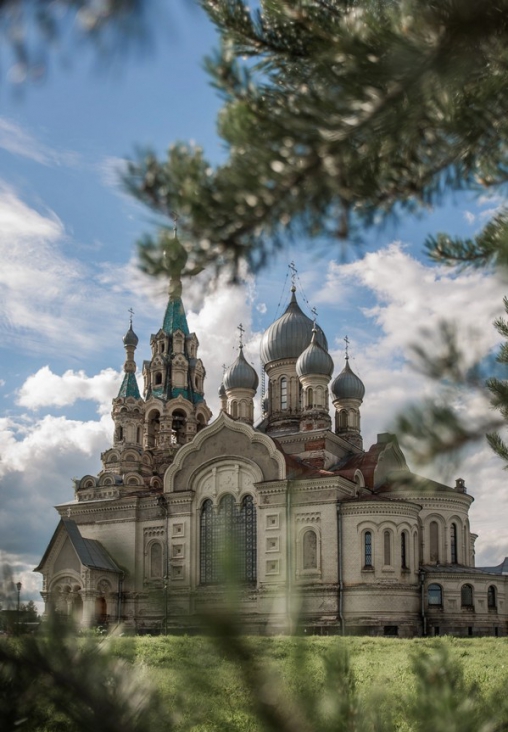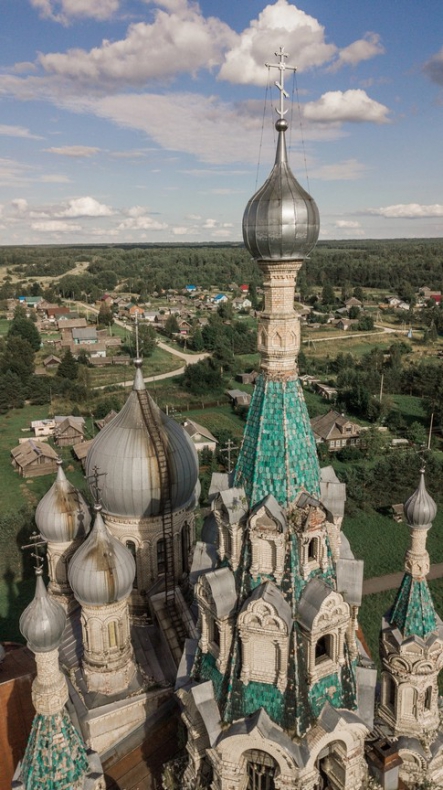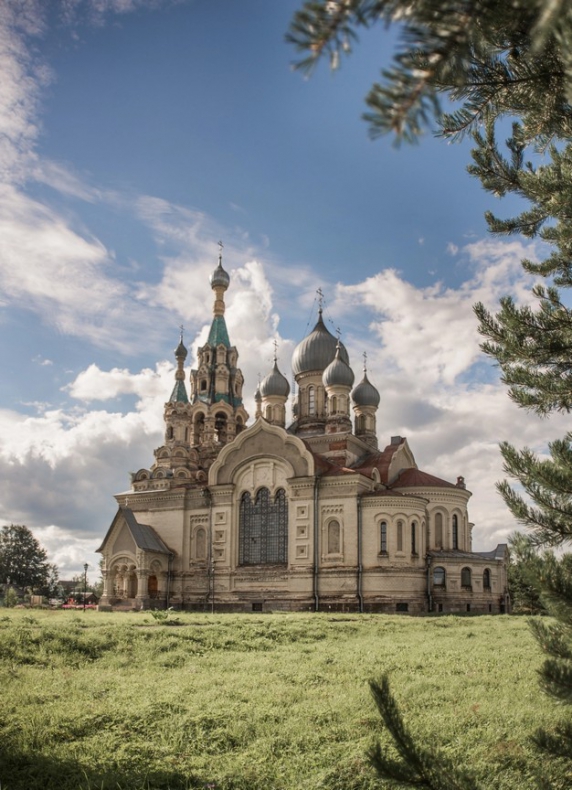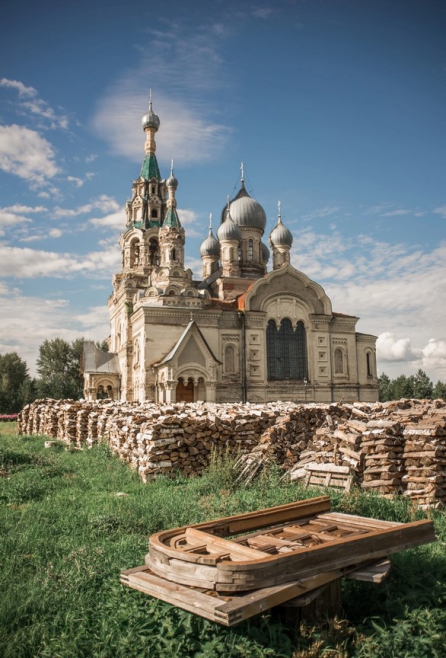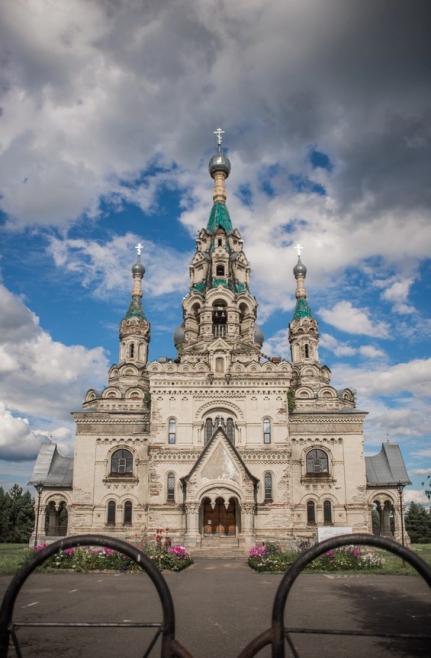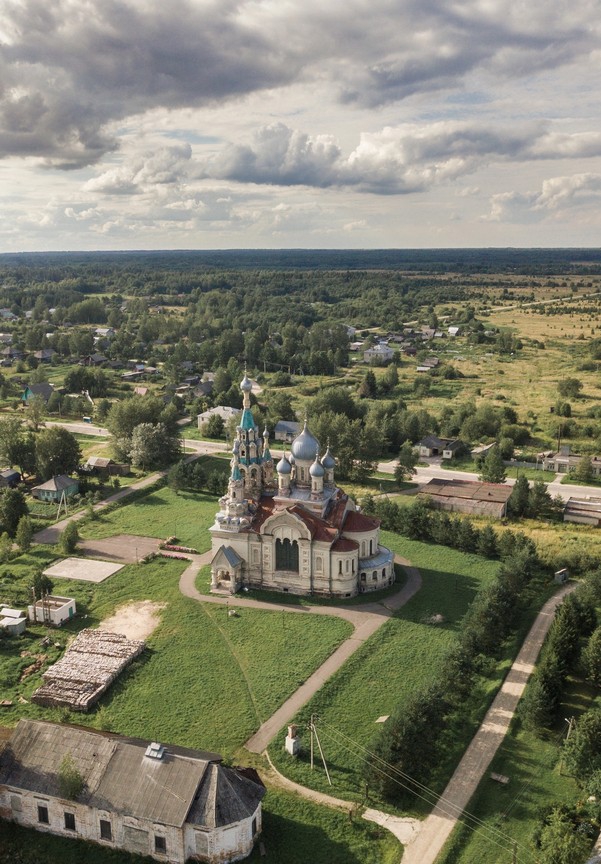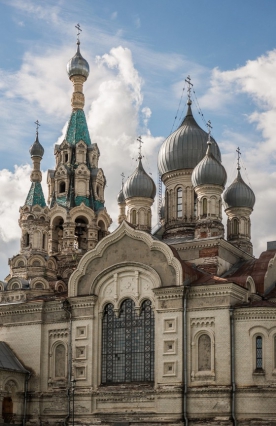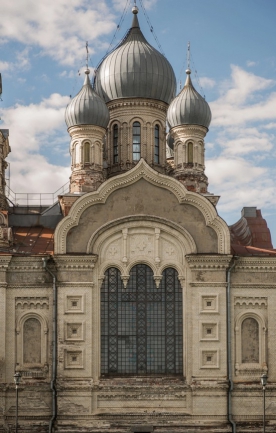The Russian land keeps a lot of man-made miracles
A vivid example of this is this church in the pseudo-Russian style in the village of Kukoboy, Yaroslavl region. Look how many details!
How did such a chic temple appear in a small village?
Not far from Kukoboy in the village of Ryabinki lived a certain Ivan Agapovich Voronin. In his youth, he went to St. Petersburg, where he quickly became rich. They say that thanks to the fact that he married a rich widow, although he himself was probably enterprising. Be that as it may, he became a merchant of the 2nd guild, the owner of the Association of Weaving Manufactories, and also the head of the society for the construction of temples.
In 1909, he returned to his homeland and donated a million rubles to the development of the village - a lot of money at that time! He suggested that local residents choose whether they want a new church or a railway from Kukoboy to Poshekhonye. What would you choose?
The Kukoboys have chosen a church! And so, at the beginning of 1912, the magnificent building of the temple was completed. The author of the project was the architect from St.Petersburg Vasily Kosyakov. He is known for the construction of several temples in the pseudo-Russian style in St. Petersburg (among them the Naval Cathedral in Kronstadt and the church on Gutuevsky Island).
The project was very expensive, because, firstly, a small brick factory was built specifically for the construction, and, secondly, unusual white bricks for the walls and turquoise tiles for the bell towers were delivered from Finland.
Numerous guests who gathered in 1912 for the consecration of the temple unanimously recognized that there is nothing like it in the Yaroslavl land! By the way, the Church was consecrated by Metropolitan Tikhon of Yaroslavl, the future Patriarch of Moscow and All Russia.
The money allocated by Voronin was enough for the temple, and for a new school, and for three stone buildings for a hospital, a shelter for the elderly
Well, what happened to the temple after the revolution, you can probably already guess ...
It was closed, in the 1930s crosses and bells were torn down, paintings, carved iconostasis and icons were barbarously destroyed ... The premises of the temple were used as a warehouse, and the basement was arranged prison.
Only in 1989 the temple was returned to believers. Now services are being held here, we just got to one of them Inside the temple is unremarkable.

